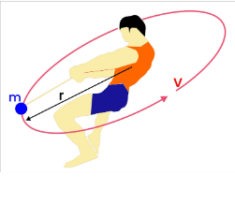Skip the acceleration process

Welcome to the world of cutting-edge technology and innovation, where we explore the boundaries of what is possible and challenge traditional methods. In this article, we delve into a revolutionary concept that aims to transform the way we perceive and interact with speed and performance: the art of skipping the acceleration process.
In a world driven by efficiency and instant gratification, the concept of eliminating acceleration might seem counterintuitive. However, this innovative approach holds the key to unlocking unprecedented levels of performance and offering a unique perspective on traditional engineering principles.
The Birth of an Idea: Revolutionizing Acceleration

Imagine a scenario where the very concept of acceleration, as we know it, is reimagined and redefined. Instead of focusing on the gradual buildup of speed, what if we could harness the power of instant velocity? This radical idea forms the foundation of our exploration into the realm of acceleration-free performance.
Born out of a desire to challenge the status quo, this concept challenges engineers and enthusiasts alike to rethink the fundamental principles of motion and dynamics. It invites us to explore the possibilities beyond the conventional understanding of acceleration, pushing the boundaries of what is considered achievable.
A Paradigm Shift: Unlocking Instant Velocity
At its core, the idea of skipping acceleration revolves around achieving maximum speed without the traditional buildup. It proposes a paradigm shift, where the emphasis shifts from accelerating over time to instantaneously reaching optimal velocity.
This approach draws inspiration from nature, where certain phenomena occur without a gradual buildup. For instance, the lightning-fast reflexes of a cheetah or the sudden burst of energy in a chemical reaction. By mimicking these natural phenomena, engineers strive to create systems that can deliver instant velocity, revolutionizing the way we perceive and utilize speed.
| Traditional Acceleration | Acceleration-Free Concept |
|---|---|
| Gradual buildup of speed | Instantaneous achievement of maximum velocity |
| Focus on acceleration phase | Emphasis on sustaining optimal speed |
| Time-dependent performance | Instant performance delivery |

By bypassing the acceleration phase, engineers aim to optimize performance, reduce energy consumption, and enhance overall efficiency. This concept finds applications across various industries, from transportation and robotics to sports and entertainment, offering a fresh perspective on traditional designs.
Applications and Benefits: A Glimpse into the Future

The potential applications of this acceleration-free concept are vast and promising. Imagine a future where vehicles can reach their top speed instantaneously, eliminating the need for lengthy acceleration ramps. This not only enhances the overall driving experience but also reduces travel time and increases energy efficiency.
Revolutionizing Transportation
In the realm of transportation, the elimination of acceleration could transform the way we commute. Electric vehicles, for instance, could harness this concept to deliver instantaneous power, providing a seamless and thrilling driving experience. Imagine a world where electric cars can accelerate from 0 to 60 mph in a fraction of a second, challenging the performance of traditional internal combustion engines.
Additionally, this concept could revolutionize public transportation systems. High-speed trains, equipped with acceleration-free technology, could reduce travel times significantly, making long-distance travel more accessible and efficient. The impact on logistics and freight transportation could be equally transformative, optimizing delivery times and reducing operational costs.
Sports and Entertainment: Redefining Performance
The world of sports and entertainment is also poised to benefit from this innovative concept. Imagine athletes equipped with acceleration-free gear, allowing them to reach their top speed instantly. This could revolutionize track and field events, providing a competitive edge and pushing the boundaries of human performance.
In the entertainment industry, this concept could create thrilling experiences. Theme parks, for instance, could design rides that deliver instantaneous acceleration, offering riders an unparalleled adrenaline rush. Virtual reality experiences could also benefit, providing immersive simulations that challenge the laws of physics and deliver an unparalleled sense of speed and motion.
Engineering Challenges and Future Prospects
While the idea of skipping acceleration is intriguing, it presents unique engineering challenges. The concept demands a deep understanding of dynamics, materials science, and energy management. Engineers must develop innovative solutions to harness and control the instantaneous power required to achieve optimal velocity without compromising safety or sustainability.
The future prospects of this concept are exciting. As technology advances and our understanding of materials and energy deepens, we may witness the development of efficient and sustainable acceleration-free systems. This could lead to a new era of transportation, where speed and efficiency are no longer mutually exclusive. The impact on various industries and everyday life could be transformative, offering a glimpse into a future where acceleration is a thing of the past.
Frequently Asked Questions
How does the acceleration-free concept work in practice?
+
In practice, the acceleration-free concept involves utilizing advanced propulsion systems, such as electric motors or innovative energy storage solutions, to deliver instantaneous power. By bypassing the traditional acceleration phase, these systems focus on sustaining optimal speed, resulting in a seamless and efficient performance.
What are the potential drawbacks of skipping acceleration?
+
One potential drawback is the increased strain on components and systems, as instantaneous power delivery can be demanding. Additionally, the concept may require specialized infrastructure and a deep understanding of energy management to ensure safety and sustainability.
Are there any real-world examples of acceleration-free technology?
+
Yes, there are emerging examples. In the automotive industry, some electric vehicles utilize instant torque delivery, providing a near-instantaneous acceleration experience. Additionally, certain robotics and automation systems are designed to deliver precise, rapid movements without a gradual acceleration phase.
How does this concept impact the overall energy efficiency of a system?
+
The acceleration-free concept has the potential to enhance energy efficiency. By eliminating the energy-intensive acceleration phase, systems can focus on sustaining optimal speed, reducing overall energy consumption. However, the specific impact depends on the design and implementation of the system.
What are the safety considerations when implementing acceleration-free technology?
+
Safety is a critical aspect. Engineers must carefully design and test acceleration-free systems to ensure they can handle the instantaneous power delivery without compromising stability or reliability. Additionally, user education and training are essential to ensure safe and responsible use of such technology.



